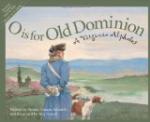We stood looking blankly at the closed outbuilding trying to imagine the hidden rooms and passages beneath it. Tradition told us that they were for refuge from the Indians. That explanation seemed well enough at first. But before we could get into the spirit of it enough to catch even the faintest bit of a warwhoop and to scuttle for the subterranean chambers, we made up our minds that that was not what the things were for anyway. There had ceased to be much danger from Indians along that part of the James by the time even this old home at Westover was built.
So, casting about for a better explanation, we hit upon the idea that William Byrd had constructed the underground rooms in imitation of Pope’s famous grotto, which the Colonel and his daughter Evelyn must have seen when entertained by the poet in his villa at Twickenham. But even after we had pictured the mysterious chambers all hung round with mirrors, just like Pope’s, and candles everywhere, we could see that so tame a thing as the grotto theory would never do.
There were so many nice, awful things that such a place would be good for. Spurring our jaded fancy with bits from Ali Baba and the Forty Thieves, we got on famously for a while with a pirates’ den. We had a long, low, rakish ship lying in the river just off the tunnel’s mouth; black-bearded ruffians, with knives between their teeth, stealing ashore and disappearing within the dark underground passage; the great stone table down there heaped with Spanish gold; good Jamaica rum pouring down wicked throats; the dark tunnels ever echoing the rollicking chorus, “Six men sat on the dead man’s chest”—when suddenly it occurred to us that we were somewhat compromising the old colonial grandee, Colonel Byrd. With that we gave the matter up. We quit staring at a closed brick outbuilding with unseeable things down under it, and went on our way. And, as it turned out that we never visited the underground rooms after all, this was as near as we ever came to solving the colonial mystery.
That day, sitting about the fireplace in Colonel Byrd’s library, we listened to a pleasant chapter in the story of an old manor-house—the account of the recent restoration of Westover. As in most cases where extensive rehabilitation of colonial homes has been attempted, an interesting part of the work was the opening up of goodly old-time fireplaces that the changing fashions of changing generations had filled in with brick and mortar. Sometimes they had shrunk to the dimensions of a modern grate; sometimes even to that of a stovepipe hole. Indeed, what chronological mile-stones are the various forms of our American fireplaces! As the historic dates grow larger, the fireplaces grow smaller.
Of course Westover never had the hugest of fireplaces. Even when this old home was built, the shrinkage in chimney-pieces had been going on for some time. No longer was most of the side of a room in a blaze. No longer was the flame fed by a backlog so huge that “a chain was attached to it, and it was dragged in by a horse.”




